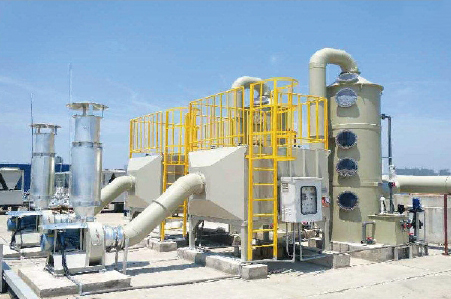Waste gas treatment system
- Tel:0550-7660111
- Fax:0550-7661008
- Email:1198754344@qq.com
Description
Laboratory in the process of inspection, identification, testing, due to the needs of the experiment will produce a variety of waste gas, waste gas composition is relatively complex, including aromatic family: benzene, toluene, xylene, styrene, etc.; Ketones: acetone, cyclohexanone, methyl ethyl ketone, etc. Esters: ethyl acetate, butyl acetate, methyl isoate, banana water, etc. Alcohol: methanol, ethanol, butanol, isopropyl alcohol and other organic waste gas. Also includes nitrogen oxides, sulfuric acid fog, hydrogen chloride, hydrogen fluoride, hydrogen sulfide, sulfur dioxide and other inorganic waste gas; At the same time, there are high temperature combustion exhaust gas, dust and so on. In the process of the experiment, the waste gas often has the characteristics of complexity and diversity, and the degree of damage to human health is also different, in order to better solve the impact of organic solvents and organic waste gas on human beings.
Spray scrubber structure and working principle:
The spray scrubber is mainly composed of the main cylinder, the upper spray tray, the middle packing, the lower spray tray, the cleaning hole, the sight mirror hole, etc. Its working principle is: under the negative pressure of the induced draft fan, the exhaust gas flow is sucked into the air pipe and sent into the tower body. The main body of the tower is a round cylinder, and the washing liquid (sodium hydroxide solution) is shot into the cylinder from the spray pan on the upper part of the washing tower, so that the filling of the whole cylinder is mixed with water to form a mist-like washing liquid water film flowing from above (the filling keeps rolling under the action of the air flow, so that the waste gas and the washing liquid are fully mixed). Under the action of negative pressure, the exhaust gas rotates and rises in the cylinder body, and always fricts with the washing liquid water film in the cylinder body, so that the acidic gas is fully moistened and neutralized by the washing liquid water film. The bottom of the cylinder is provided with a cleaning hole to facilitate the bottom of the cylinder cleaning, and the washing liquid is continuously circulated through the liquid storage tank (water tank) under the action of the water pump, so as to achieve the effect of eliminating waste gas.
Adsorption of activated carbon:
The adsorption of activated carbon can be divided into physical adsorption and chemical adsorption.
Physical adsorption:
It mainly occurs in the process of removing impurities in the liquid phase and gas phase with activated carbon. The porous structure of activated carbon provides a large amount of surface area, which makes it very easy to absorb and collect impurities. Like magnetism, all molecules have an attraction to each other. Because of this, a large number of molecules on the pore wall of activated carbon can produce a strong gravitational force, so as to attract impurities in the medium to the aperture.
It must be noted that the molecular diameter of these adsorbed impurities must be smaller than the aperture of the activated carbon, so that it is possible to ensure that the impurities are absorbed into the aperture. This is why we constantly change the raw materials and activation conditions to create activated carbon with different pore structures, so as to be suitable for various impurity absorption applications.
Chemisorption:
In addition to physical adsorption, chemical reactions often occur on the surface of activated carbon.
Activated carbon not only contains carbon, but also contains a small amount of oxygen and hydrogen in the form of chemical binding and functional groups on its surface, such as carboxylic groups, hydroxyl groups, phenols, lactolides, wakefulness, ethers, etc. These surfaces contain ground oxides or complexes that can chemically react with adsorbed substances, thereby combining with adsorbed substances and aggregating on the surface of activated carbon.
The adsorption of activated carbon is the result of the two kinds of adsorption.



